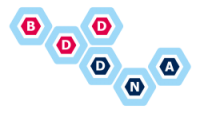Assessing the Project
Before diving into BDD implementation, it’s crucial to assess the current state of the legacy project. Identify the project’s strengths, weaknesses, and pain points. Understand the existing requirements, architecture, and test coverage to determine how BDD can fit into the project’s context.
Collaborative Requirements Gathering
BDD places a strong emphasis on collaboration between stakeholders, developers, testers, and business analysts. Start by engaging with all relevant parties to refine and prioritize requirements. Conduct workshops and brainstorming sessions to elicit the desired behaviours of the legacy system. This collaborative approach ensures a shared understanding and alignment of expectations.
Selecting BDD Tools and Frameworks
Choose BDD tools and frameworks that are compatible with the programming language and technology stack of the legacy project. Look for tools that integrate well with existing systems, enable seamless test automation, and support behaviour-driven workflows. Popular BDD frameworks such as Cucumber, SpecFlow, or JBehave can be considered for implementation.
Writing Behaviour-Driven Scenarios
In BDD, scenarios are written in a business-readable format that captures the expected behaviour of the software. Work with stakeholders and subject matter experts to define realistic scenarios that cover critical functionalities of the legacy project. These scenarios act as living documentation and provide a shared understanding of system behaviour.
Mapping Scenarios to Existing Code
One of the challenges in a legacy project is aligning existing code with BDD scenarios. Identify key areas of the codebase that need to be covered by the scenarios and refactor the code if necessary. Create step definitions that map the behaviour described in the scenarios to the actual implementation. This step ensures that the existing functionality is validated through BDD tests.
Gradual Adoption and Iterative Refinement
Implementing BDD in a legacy project is best done gradually and iteratively. Start by focusing on specific modules or functionalities and gradually expand the BDD coverage. As the project evolves, continuously refine and enhance the scenarios, step definitions, and test suite to improve test coverage and maintainability.
Continuous Integration and Automation
Integrate BDD tests into the project’s continuous integration (CI) pipeline. Automate the execution of BDD scenarios to ensure regular feedback on the system’s behaviour. This integration enables early detection of regressions and facilitates a smooth development workflow.
Knowledge Sharing and Training
Implementing BDD in a legacy project requires knowledge sharing and training. Provide resources, workshops, and training sessions to familiarize team members with BDD concepts, tools, and practices. Encourage collaboration, knowledge exchange, and continuous learning to empower the team in adopting BDD effectively.
Conclusion
Implementing Behaviour-Driven Development (BDD) in a legacy project brings numerous benefits, including improved collaboration, refined requirements, and automated testing. By assessing the project, gathering collaborative requirements, selecting appropriate tools, writing behaviour-driven scenarios, mapping scenarios to existing code, adopting a gradual approach, integrating with CI/CD, and promoting knowledge sharing, legacy projects can leverage BDD to enhance software quality and deliver value to stakeholders. Embrace BDD as a modernization strategy and witness the transformation of your legacy project into a more robust and maintainable software system.


